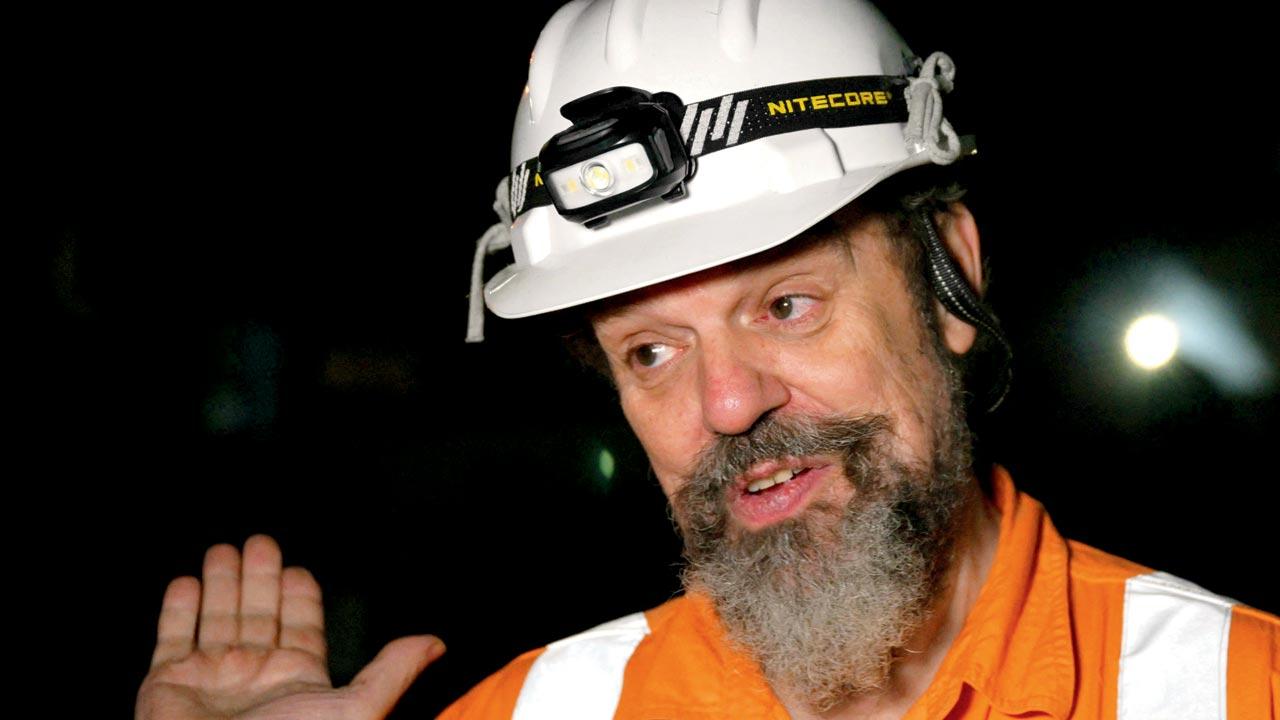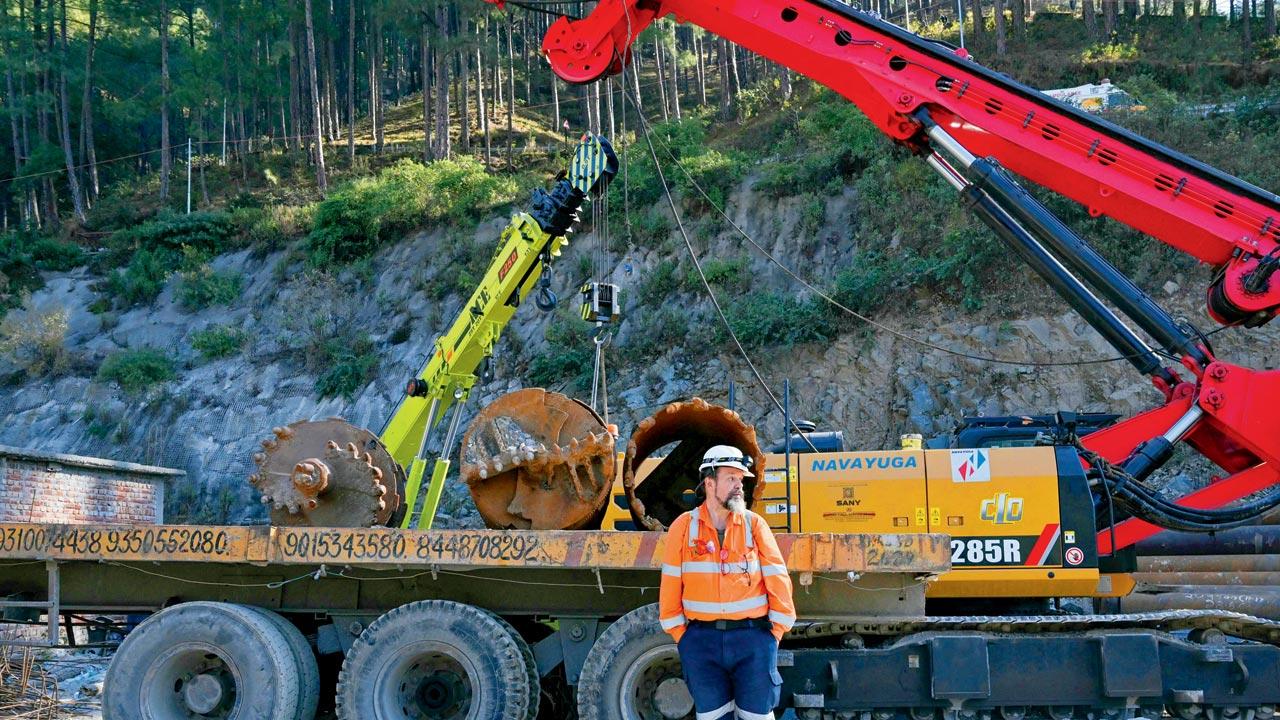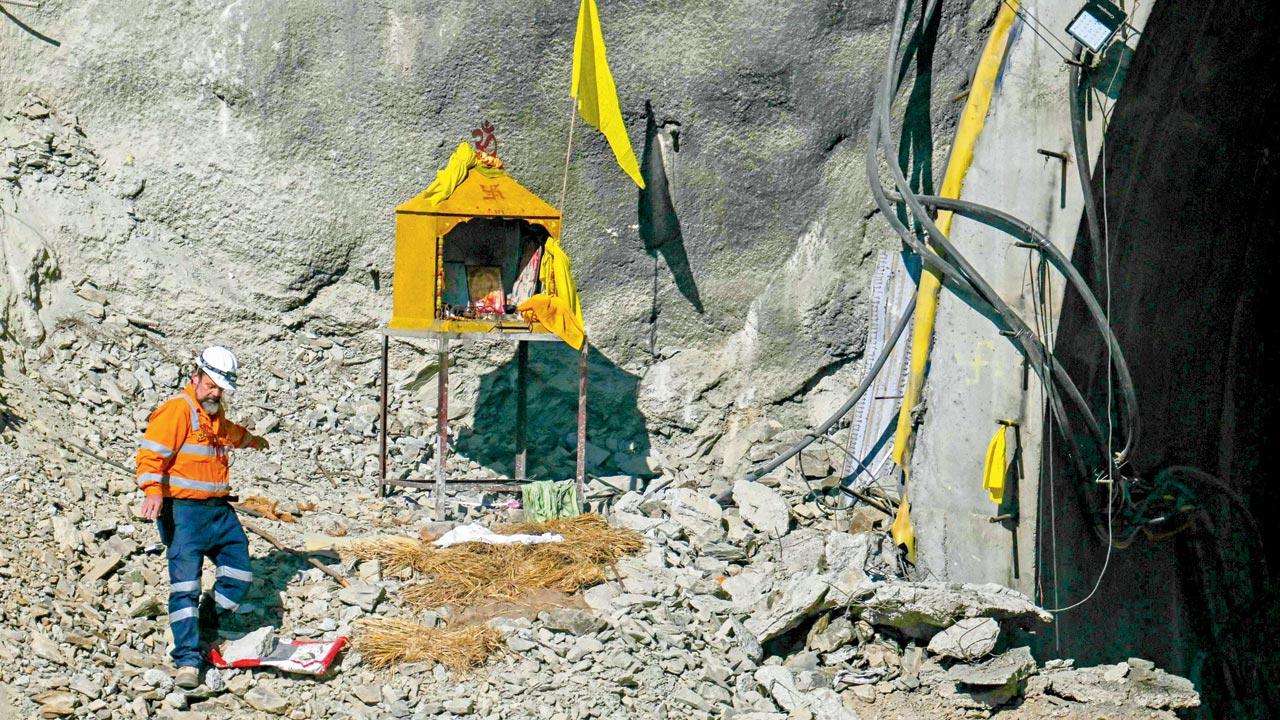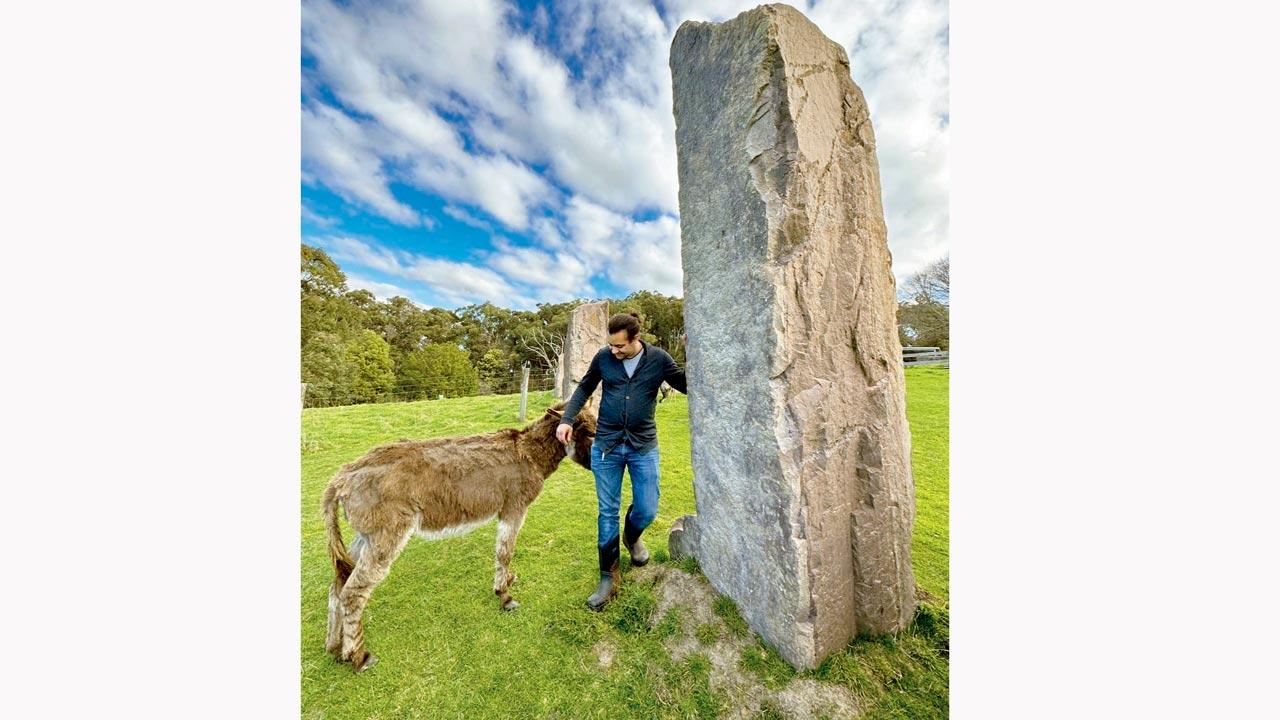mid-day meets the two most famous men of last week’s Uttarkashi tunnel rescue, who made miracles underground with little else but optimism and innate skill

Specialist in underground transport and infrastructure Arnold Dix, 59, was brought on board the expert team to brainstorm strategy to rescue 41 workers trapped inside Uttarkashi’s Silkyara Bend-Barkot under-construction tunnel. Pic/Getty Images; (right) Trenchless pipe layer Munna Qureshi, 33, is a resident of Khajoori Khas, Delhi, who earned instant fame after he became the first rescuer to reach the labourers trapped inside the Silkyara Bend-Barkot tunnel on the night of November 28. Pic/Nishad Alam
Back in Australia, Arnold Dix is a flower farmer from Monbulk, a Victoria town 40 km east of Melbourne’s key business district. “I am surely the worst flower farmer… this season, I haven’t even planted yet. So yeah, very bad!”
ADVERTISEMENT
Dix is speaking to us on video call from Saundhgaon, on his way out after a 17 day-rescue mission to dig out 41 miners from the Silkyara Bend-Barkot tunnel, where they were trapped following an avalanche. These are the Garhwal Himalayas of Uttarkashi; the rocks are slate, limestone and other weak sedimentary formations. When a television crew stopped Dix, 59, in his tracks at the disaster site last fortnight, he dragged his fingers along the nearest rock surface; the soil shockingly crumbling into his palm. It was his way of demonstrating the geological severity of the mission.

The tunnel, which was being built to provide all-weather connectivity to Yamunotri, a key location on the Chardham Yatra or pilgrimage tour of four of the holiest sites for Hindus, collapsed on November 12. The close-knit underground rescue community was buzzing with news of the disaster and word reached Dix. A call from an Indian engineer friend and the government saw him get on a flight to India, no questions asked.
Soon, Dix would become the most recognised face of the mission, his scraggly French beard and hardhat an immediate giveaway of the foreign expert who was assisting in one of India’s gravest natural disasters. He was confident that he would get the 41 miners who belonged to the states of Jharkhand, Odisha, West Bengal, Himachal Pradesh, Assam, Uttar Pradesh, Bihar and Uttarakhand, out by Christmas. For Dix, who heads the Geneva-based International Tunnelling and Underground Space Association and is a lawyer, Christmas came early on November 28.
 President of the International Tunnelling and Underground Space Association, Australian independent disaster expert Arnold Dix inspects new machines as he prepares to rescue workers trapped beneath the collapsed under construction Silkyara Bend-Barkot tunnel in Uttarkashi district of Uttarakhand, on November 24. Pics/Getty Images
President of the International Tunnelling and Underground Space Association, Australian independent disaster expert Arnold Dix inspects new machines as he prepares to rescue workers trapped beneath the collapsed under construction Silkyara Bend-Barkot tunnel in Uttarkashi district of Uttarakhand, on November 24. Pics/Getty Images
As he spoke to us for this article, a government officer arrived to usher him to a car that would take him to a chopper set to fly to New Delhi. Dix had missed an earlier flight while he was caught up celebrating the rescue victory at the temple of local deity, Baba Baukhnag. Villagers had said that the disaster was long coming. The temple has been razed for the construction, infuriating the Lord. “I had a choice,” Dix, tells mid-day, “to either take the helicopter, or go say, thank you. I chose gratitude. It was the best day, and a bit surreal—I was with the National Disaster Response Force officials, members of the Indian Army, and the state police… we were laughing and singing. We had no dead bodies to take care of. That was a miracle.”
Dix says that most tunnelling disasters require his expertise to extract the bodies of those who didn’t make it. This rescue was a happy rarity. His training and education allows him to sit at the crucial intersection of law and engineering, and his interest lies especially in helping formulate contracts for ethical and fair apportionment of risk.
 Dix prays to the local deity Baba Boukhnag at the mouth of the collapsed under-construction tunnel
Dix prays to the local deity Baba Boukhnag at the mouth of the collapsed under-construction tunnel
Born to a family in Melbourne, Dix’s parents worked in the hotel business and travelled across the country setting up restaurants. In trademark humour, he says, “I am very good at serving drinks, and saying, ‘Ma’am, what do you want?’” He studied at the private Haileybury school and Monash University where he studied in geology and mining engineering. He says that his first brush with death was early: he was three years old and had almost fallen out of a car window. His demeanour is chatty and relaxed, and despite the gravitas of his work, he has a way of putting you at ease. Studying law meant that he could challenge the administration on ecological projects. “I was so good that the government hired me; I wouldn’t trouble them anymore!” he laughs. He found himself in Europe as Australia’s representative to PIARC, the World Road Association (founded in 1909 in Paris), where he did most of his work. “My work has not been publicly discussed. It’s sensitive and confidential. It’s only now in India that I feel like I am in a Bollywood movie.”
The turning point in Dix’s career came with the 9/11 terror attacks executed by the al-Qaeda against the United States in 2001, with hijacked planes ramming into the Pentagon structure and the World Trade Centre’s twin towers. “That disaster changed the course of my career. I was shocked that this could happen. I quit my well-paying job as a lawyer, and decided to veer towards helping people with my skill. It was the toughest rescue, psychologically, for me,” he says of the efforts to steer the survivors through the tunnels below the towers to the Hudson River.
 Dix finds and lodges vertical rocks in a specific location as a gift for his loved ones. The spot is not random. It is where the sun will rise and hit on the said person’s birthday
Dix finds and lodges vertical rocks in a specific location as a gift for his loved ones. The spot is not random. It is where the sun will rise and hit on the said person’s birthday
But logistically, Dix rates the Silkyara Bend-Barkot tunnel rescue as the hardest. “It’s basically a goat path. It’s hard to even get up there on foot; how do you get in giant machines that can help in rescue? Also, everything that could go wrong, did.”
On November 17, the earth auger machine that had arrived to help with horizontal drilling through the rubble, gave way. Another was brought in; that one also gave up. “We decided that we had to look at the challenges as an opportunity presented to us to do something different. We wanted to stay positive. We were a team, except when they’d break into Hindi with excitement, and I, a pink man speaking English, would wonder what was going on!”
The final solution—to employ rat hole miners who would manually dig by hand, 100 mm at a time—was seconded by Dix. He is aware that the Supreme Court of India banned this procedure in 2014 because it was unsafe for the workers and a risk to the environment too, but he knew that the mountain was collapsing and there was danger of a further avalanche. If digging had to happen, it had to be slow and soft.
In this moment of public glare around an Aussie expert who helped with a miracle rescue in India, Dix stands for economic development but not at the cost of human life and nature’s degradation. “We have to ensure harmony, we cannot make a tunnel for the sake of the tunnel alone. A balance between nature and humans is paramount. That’s just the way it has to be.”
The risk and logistical nightmare his profession involves means it’s not always a favourite of the family. “My first wife couldn’t stand it [my work], and that could be why we divorced. But, we are good friends now. I got married again, and my wife, Divina, has also worked in tunnel rescues. So, she understands. Now, of course, she has given that up and grows flowers with me,” he smiles.
In a self-deprecating moment, Dix calls himself a “failed flower farmer”. But, his love and connect with nature is evident when he speaks of a unique gift that he plans for those he is fond of. “I find and lodge vertical rocks in a specific location as a gift for them. The spot is not random. It is where the sun will rise and hit on the said person’s birthday. It’s my way of telling them that no matter what happens, and however crazy the world is, the sun will come up. The world will be fine.”
 Subscribe today by clicking the link and stay updated with the latest news!" Click here!
Subscribe today by clicking the link and stay updated with the latest news!" Click here!







